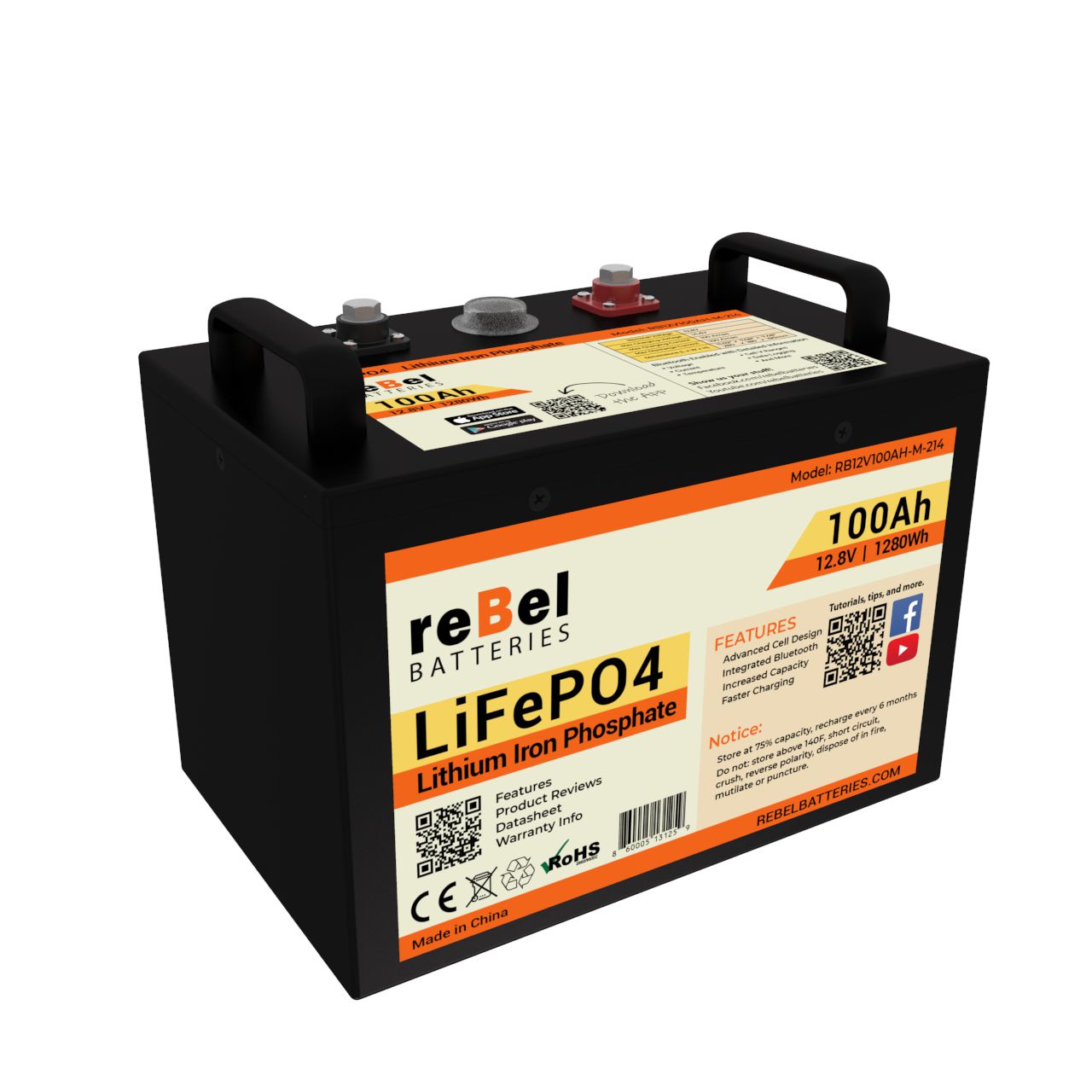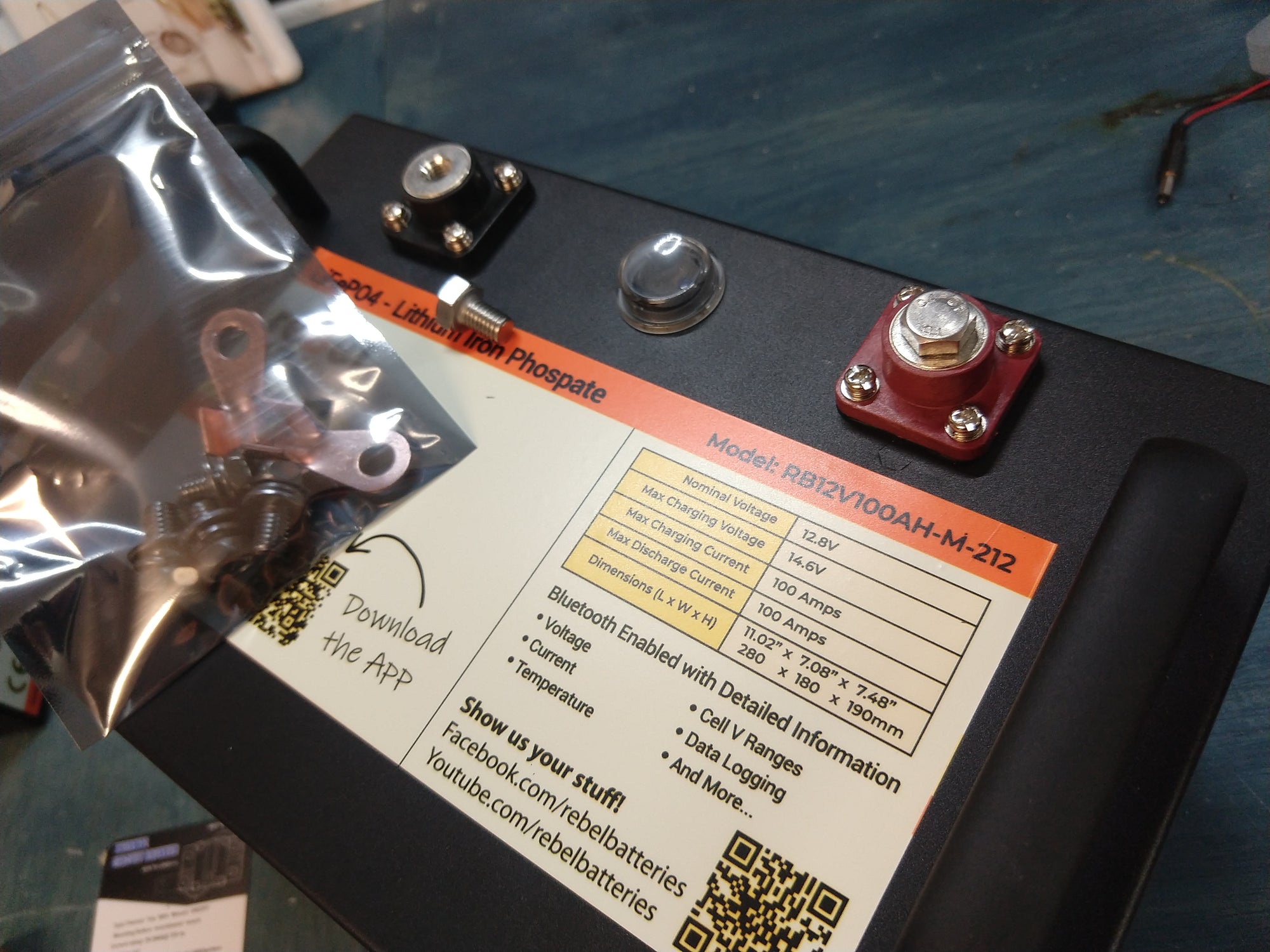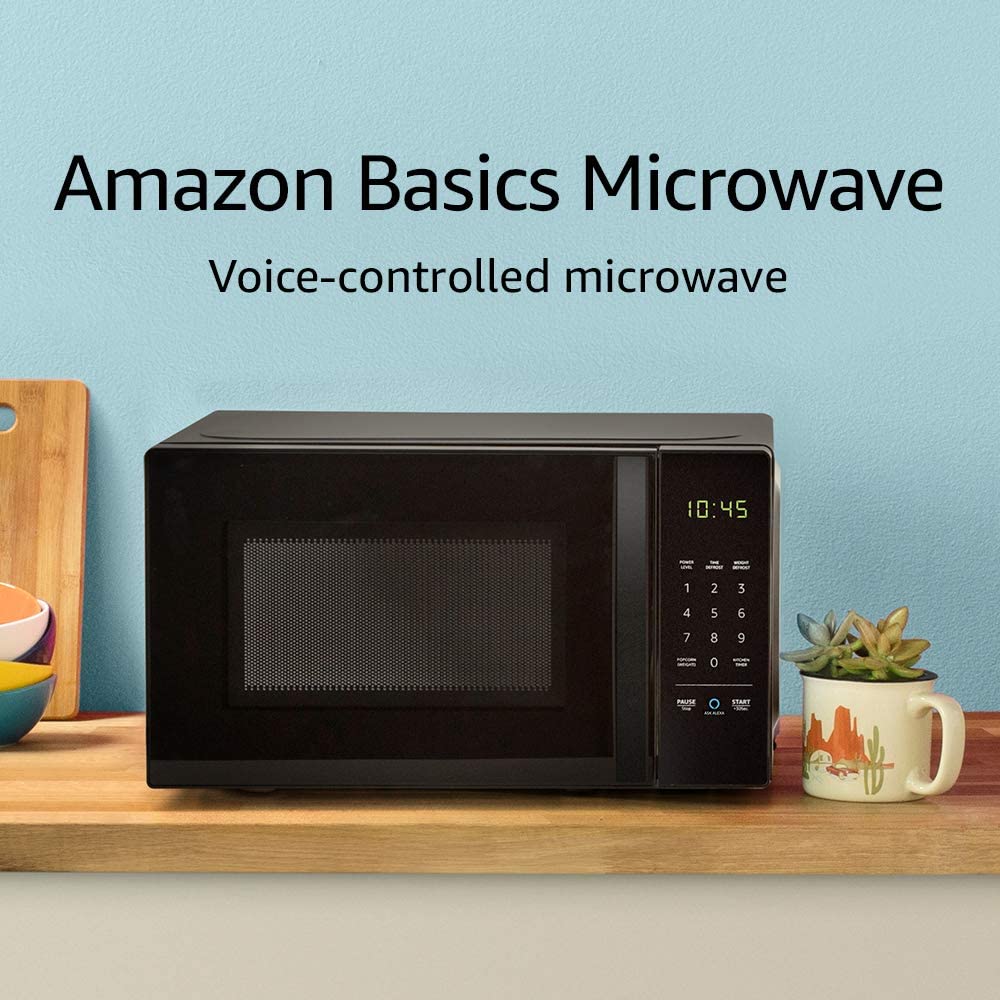The reBel 100AH Lithium Iron Phosphate battery is the smallest of the rugged built beast size powerhouse batteries Rebel sells. From its included heavy duty hardware, its quality rugged build, special features and its performance there's nothing cheep about this battery except its low price.
The battery has a life expectancy of thousands of cycles and an all metal case that feels industrial and very solid. There's no give to the case at all and it's coated so it won't conduct electricity. The writing appears to be painted on the battery so no label to come off. The information will be there for you to read years later should you need it again. The all metal lid is screwed on making this battery repairable if you decide to replace the cells or upgrade the BMS at some point. Unlike many batteries this one was designed with future service in mind if it ever needs to be repaired. The cells are held in with a metal bar and foam to make repairs easy and help protect the battery against vibration. See this video if you want to see the inside of this battery. https://www.youtube.com/watch?v=Bf678mbY5ZI.
The battery has two all metal handles one on each end of the top. These handles are firmly attached and don't fold down, but the battery will still clear the top of a battery box.
This battery is less than half the weight of a Flooded or AGM 100AH battery and every ounce of that weight counts because you can use the full 100 amp hours so you're not carrying around any dead weight.
This battery has the Bluetooth feature most of the reBel batteries come with that will give you volts, watts, state of charge, how much current you are drawing, how many amp hours are left and how many amps the battery is being charged with to mention some of the information it makes available to you through the app you can get for Android or IOS. The Bluetooth feature draws very little power so it can be left on for several days without taking any real noticeable capacity from the battery. Because the case is metal the Bluetooth is a little less sensitive than the Bluetooth in the plastic case battery is, but it's not bad at all. I could connect to both batteries a good twenty feet away with no problem. Where I saw a difference is when I went in the garage and closed the door. From there I could connect to the 50AH battery but not to the 100AH battery. However, when I closed the door to the room both batteries are in I could still connect to both from a good twenty feet away and could have gone a few feet farther.
There is a switch on the top of the battery in the middle between the posts for turning the Bluetooth on or off that is lit when it's on. This switch is covered with a rubber boot to keep water out but this battery isn't recommended for use in areas where there's a chance water could cover or splash it unless you put the battery in a sealed waterproof box. But reBel also carries a 100AH battery that has a plastic case, is sealed and can be used around water.
The posts one located on each end of the top of the battery are in an insolated block that is screwed to the case each one with four screws. Each post has a screw in the top for attaching cables. And did I mention the posts are metal not led so no danger of stripping the bolt holes under normal use. You won't have to buy any hardware to attach your cables either. This reBel 100AH metal case battery comes with one set of screws already in the posts and two more sets of screws that are different lengths so you can pick the size you need. This is nice heavy duty hardware. It's heavy and doesn't feel like you could easily break one of these bolts off. Each screw has a lock and flat washer already on them and the washers don't come off. I like that. No more having to worry about the washers falling off when you're trying to line everything up. The screws aren't threaded where the washers are making them that much more resistant to breaking off. These screws can be tightened with a wrench, with a Phillips screwdriver or with a small regular screwdriver. I think wing screws for hand tightening would be nice. But unless you're always adding and removing cables this included quality hardware is perfect.
This battery can be charged and discharged at 100 amps, but it's always best to charge at a lower rate if you can. Charging at a high rate all the time will shorten the life of the battery a little but we're not talking about that many cycles lost compared to the over 2000 cycles these batteries claim to be capable of providing.
I'm sure what you really want to know is how well does this battery work so lets take a look at some numbers from this beast. This test was done with the battery in a box sitting on foam to simulate conditions where the battery will be in a battery box. The top was uncovered though. I ran a discharge test using a light and a heater using a pure sine wave inverter loading the battery to 74 amps. That's enough to cover a small window air conditioner, several lights, a television and still leave a few amps for other things. When the voltage dropped to 12.5V the amperage increased to 82 amps over the next ten minutes. Check out these impressive results.
Amps at start of test, 74. The voltage settled to 12.91V. Nine hundred and 24 watts.
Fifteen minutes, 12.88V.
Thirty minutes, 12.83V.
Forty five minutes, 12.77V. If you want the internal temps, sensor 1, 108F, sensor 2, 126F. The terminals were warm to the touch but not hot.
One hour, 12.66V.
One hour and fifteen minutes, 12.39V.
One hour and twenty minutes on the nose the battery reached 12V. A little over a minute later the BMS turned the power off. Those are some pretty impressive results. As for heat? The battery was warm but it wasn't hot to the touch anywhere. I thought sure the posts would get hot but they didn't. They were very warm to the touch but not anywhere near hot enough you couldn't leave your hand on them. The foam acted like insulation so the bottom of the battery was the warmest spot. It may not be a good idea to have this battery sitting on foam when it's warm outside if you're pulling a high current. It doesn't get hot enough to hurt anything but the foam does trap heat the battery doesn't need and would hold even more heat if it's completely in closed in hot weather.
If you're using Lead-Acid batteries and considering making the switch to Lithium there is one thing you should know. Lithium Iron Phosphate batteries give you all the power you pay for up front. You can use well over ninety percent of their capacity above 12V whether you're drawing one amp or the full C-rating of the battery. Unlike Lead-Acid batteries where the voltage sags fast under a heavy load and after the battery dies it recovers to some extent when the high current load is removed, Lithium Iron Phosphate batteries don't have any real usable recovery. The voltage will recover to some extent and yes you could still draw an amp or two for a few minutes but the voltage will fall well below 12V pretty fast. I will see about showing this in another article, but there won't be any amount of real usable high current left once the battery is fully discharged.
In the future I'll have more articles showing specific runtimes of different things on this and maybe the larger batteries too. If there's something you want tried with any of these batteries pleas let reBel batteries customer service know and I'll try to either test the appliance or use a similar load to its current draw to show how long it can be powered.
Can a microwave oven be powered with this battery and an inverter?
Yes, if it's under 1000 watts. A 700 watt microwave works great when powered with this battery and an inverter. If yours draws more you can parallel two of these batteries and have two hundred usable amps. That's enough to power an inverter large enough to run a 1500 watt microwave oven.
If I buy one of these large capacity batteries what kind of inverter will I need?
That depends on your needs and what you plan to use it to power. When ever possible always use a pure sine wave power inverter. Modified sine wave inverters are great for some things but not good for others. A pure sine wave inverter puts out very clean power like your outlets in your house provide. Today the price difference between pure and modified sine wave inverters isn't that much.
How large inverter can this battery power?
I don't recommend going above 1000 watts. That being said if you already have a 1500 watt inverter or plan to add more batteries later you can use a larger inverter with this battery as long as you don't draw more than 1200 watts. If you go above1200 watts you will exceed the batteries rated amperage if you are using a single battery.
In conclusion I highly recommend this battery to anyone needing a great deal of stable 12V power as well as to anyone needing a battery capable of putting out five or ten amps above 12V for several hours. More test to come on this battery later.



